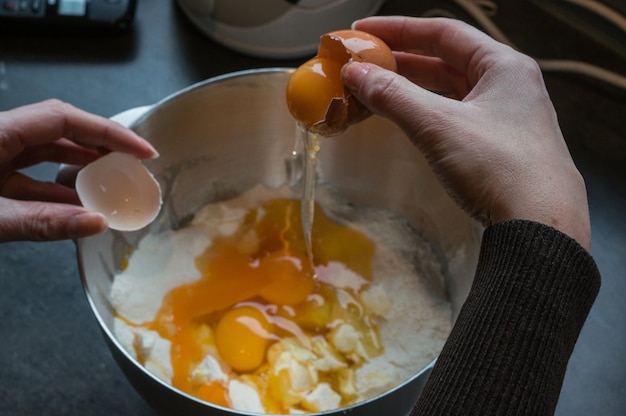{Jump to Recipe This website may contain affiliate links and advertising to provide you with recipes. Soft egg whites and warm, runny yolks are a fantastic reason for every home cook to learn how to poach an egg! It’s not as difficult as it may seem, and these eggs are so delicious that you’ll wonder what you’ve been missing all these years! I love having eggs for breakfast almost every morning! They’re a great way to kickstart your day, and I’ve always been a fan of savory breakfasts. I appreciate that they’re packed with vitamins and nutrients that keep me satisfied and focused until lunchtime. If you’re also a fan of eggs for breakfast, you’ve got to try these Egg Muffins, Baked Scrambled Eggs, and Overnight Eggs Benedict Casserole. How to Make Poached Eggs I believe everyone should be able to make poached eggs at home! It’s simpler than you think, and they taste incredible. You might be wondering, "How does the extra effort make them taste better?" Well, the secret is that when you cook them in water, the egg white stays soft and the yolk is runny and flavorful. There are no crispy bits, air holes, or white film interfering with your perfect egg experience! Now that I’ve convinced you that poached eggs are amazing, let’s discuss how to enjoy them! You can have them Eggs Benedict style, which is a classic presentation. They’re also surprisingly delicious on a smash burger! I like them on my English muffin breakfast sandwich, or even on a slice of buttered toast. If you enjoy a sunny side up egg with your hash browns, you’ll love these poached eggs prepared the same way! Ingredients Making poached eggs requires just two simple ingredients! You’ll also need water to poach the eggs in. Besides that, this recipe is straightforward. Feel free to add more ingredients after poaching your egg. I personally enjoy adding salt, pepper, and hot sauce! You can find more details in the recipe card below. Large Eggs: You can make as many poached eggs as you want using this method. I always opt for large grade A eggs in my kitchen. White Vinegar: This helps the egg hold together in the water and firms up the yolk perfectly. Poached Egg Recipe I assure you that making poached eggs is much easier than you think! It’s all about the water temperature, cooking time, and one special ingredient – vinegar! You’ll want your hot water to simmer, transitioning from boiling to a gentle bubble. Cook the eggs for about 4-5 minutes. Ensure you cook the eggs in simmering water to avoid overcooking or undercooking them. These eggs are perfect for breakfast or brunch on special occasions; you’ll love knowing how to make them! Heat Water: Bring a large pot of water to a boil on high heat. Once boiling, reduce the heat to medium to maintain a light, bubbling boil. Prepare Eggs: Crack an egg into a small bowl. Add vinegar to the water and stir in a circular motion to create a swirling vortex. Cook Egg: Quickly and gently pour the egg into the center of the vortex. Cook for 4-5 minutes. Lay On Paper Towel: Use a slotted spoon to remove the egg and place it on a paper towel-lined plate to soak up any excess liquid. Repeat: Continue with the remaining eggs. Enjoy: Serve immediately or store in an airtight container in the refrigerator for up to 3 days. Tips for Making Poached Eggs I’m about to demystify the process of cooking poached eggs! While there are various methods for poaching eggs, I find this recipe to be the simplest. Here are some tips to address any lingering questions you may have. Temperature of the Water: The water temperature should be around 180 degrees Fahrenheit. If it’s significantly cooler or hotter, the results may not be as good. At precisely 180 degrees, the water won’t be simmering, which means less movement of the egg and a better outcome. Although I mention simmering water in this recipe, you can have the water slightly hotter than 180 degrees, but it must stay below 212 degrees. Straining Your Eggs: Use a slotted spoon or a fine mesh strainer to remove the egg from the poaching water. This helps eliminate any wispy egg whites. Using Fresh Eggs: It’s best to use fresh eggs to ensure the whites stay firm and maintain their shape. Storing Leftovers Poached eggs are a delightful treat that looks elegant and tastes amazing. Here’s how to store any leftovers. In the Refrigerator: Store leftover poached eggs in an airtight container in the refrigerator for up to 3 days. Reheat them gently in the microwave or oven to avoid overcooking the yolk. More Breakfast Recipes Breakfast is the most important meal of the

- May 4, 2025 23:47 PM
